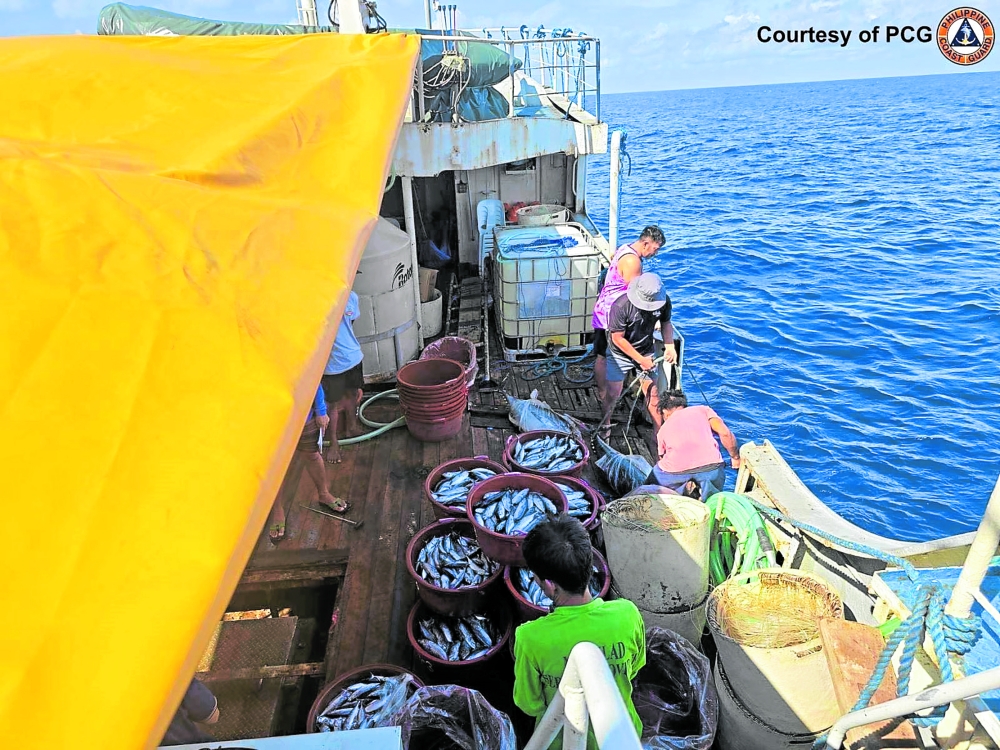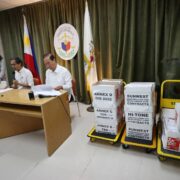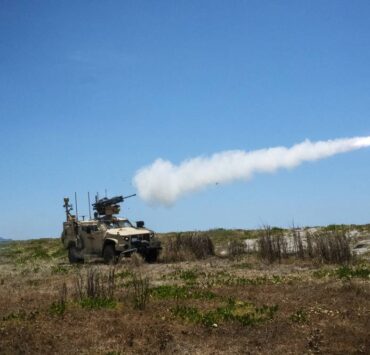Gov’t launches maritime ‘Kadiwa’ for WPS fishers

The Philippine Coast Guard (PCG) and the Bureau of Fisheries and Resources (BFAR) on Friday launched a maritime version of the “Kadiwa” program to encourage more Filipinos to fish in the West Philippine Sea (WPS), particularly at Panatag (Scarborough) Shoal despite harassment by Chinese forces.
With the new initiative, which they are calling the “Kadiwa ng Bagong Bayaning Mangingisda (KBBM) Program,” the PCG and BFAR also intend to enhance Filipino presence in waters off the the country’s western seaboard.
The original Kadiwa program offers lower-priced agricultural products to consumers at dedicated community stores. The program also benefits farmers who sell their produce directly to consumers without middlemen. Kadiwa aims to ensure higher earnings for producers and lower prices for consumers.
MV Malakaya
The government-owned fish carrier deployed for this task, the MV Mamalakaya, made its maiden voyage near Panatag on Friday to engage with Filipino fishermen, purchasing their catch and offering fuel subsidies, according to Commodore Jay Tarriela, the PCG spokesperson for the WPS.
By 5 p.m. on Friday, Mamalakaya was able to purchase 20 tons of fresh catch, according to Tarriela, calling it “a promising start to the program.” He did not give other details.
He said the KBBM program aims “to enhance the livelihoods of Filipino fishermen while increasing the country’s fish supply.”
“Our objective is to encourage fisherfolks to venture beyond the territorial sea, thereby enhancing our presence and promoting active fishing activities in the West Philippine Sea,” Tarriela said in a statement.
A country’s territorial sea is about 22 kilometers from the baseline or shoreline. Fishing only within that maritime zone would limit both catch and income for the fishermen.
Panatag, also known as Bajo de Masinloc, is 220 km west of Zambales province, well within the country’s 370-km exclusive economic zone (EEZ).
It is a marine resource-rich area that has been a traditional fishing ground for Filipinos, Vietnamese and Chinese before China took full control over it in 2012 after a two-month standoff with the Philippine Navy.
Chinese coast guard, naval and maritime militia forces have since harassed, attacked and driven Filipino fishermen away from the shoal, causing severe declines in their overall catch and earnings.
“Many Filipino fishermen currently limit their fishing activities to within the territorial sea due to logistical challenges and costs associated with transporting larger catches to Manila or other major fish ports,” Tarriela said.
The KBBM Program, according to him, addresses these obstacles by enabling the government-funded fish carrier to buy fresh catch directly from fishermen while they are still at sea where they are also supplied with additional ice for storage and fuel subsidies.
“This initiative is designed to motivate more Filipinos to venture into the West Philippine Sea in pursuit of larger hauls,” Tarriela said.
The PCG vessel BRP Gabriela Silang and one of its planes were deployed to provide support and to observe.
Through the KBBM, Tarriela said the government hopes to create “a sustainable fishing environment that benefits both our fishermen and the nation as a whole.”
In May last year, fisherman Randy Megu, 51, from Infanta town in Pangasinan, told the Inquirer that they used to catch up to two to three tons of a variety of fish from just three days of fishing at Panatag. He said each of them would earn P5,000 to P6,000.
He lamented that the restricted access to Panatag and with Chinese vessels driving them away from the shoal, they now have to spend at least 10 to 15 days out at sea to produce the same amount of fish. The longer fishing days had jacked up their expenses for fuel, food and ice.
The July 2016 decision by the international arbitral tribunal invalidated China’s sweeping claims to the South China Sea, including the WPS and upheld the Philippines’ rights to its EEZ. Beijing continues to ignore the ruling.
PCG assurance
In January last year, a China Coast Guard (CCG) ship drove away Filipino fishermen who were collecting seashells near the south entrance of Panatag while a Filipino fishing boat was harassed by the Chinese on a rubber boat.
Despite the incident, Tarriela still encouraged Filipinos to keep fishing at Panatag, assuring them that the PCG would conduct regular patrols in the area. In the following month, the Philippines took “decisive action” in securing Panatag by deploying PCG and BFAR vessels to the shoal.
National Security Adviser Eduardo Año then said that vessels from the PCG and BFAR would take turns patrolling the waters around Panatag, a departure from previously irregular or occasional deployments.
Jonathan Malaya, assistant director general and spokesperson for the National Security Council, told an online forum early this week that any attempt by China to transform Panatag Shoal into an artificial island would be considered a “red line” that Beijing should not cross.
7 China-built ‘islands’
Tarriela told reporters on Wednesday that they had not monitored reclamation activities at Panatag.
China has already built at least seven artificial islands on reefs and shoals, mostly inside the Philippines’ EEZ and have turned them into military garrisons and air bases.
Earlier this week, US maritime expert Ray Powell said China has “really doubled down on its strategy to take control” of Panatag.
Powell is director of SeaLight, a program of Stanford University’s Gordian Knot Center for National Security Innovation that keeps track of Chinese activities in the WPS.
Based on SeaLight’s satellite images, the presence of Chinese ships at Panatag has been increasing over the years.
Powell said SeaLight monitored 57 Chinese ships at Panatag from May 2023 to April 2024, but it increased to 78 ships over the next 12 months.
“The main takeaway is essentially the doubling of Chinese activities in Scarborough Shoal in the last 12 months and the fact that they continue to push further and further east,” he said.





















